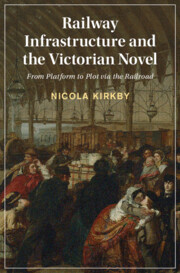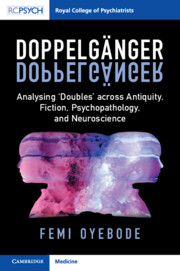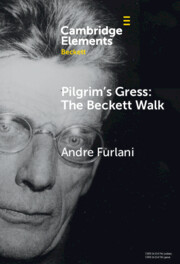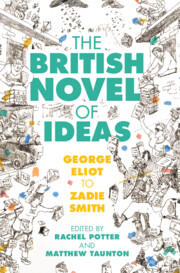Refine search
Actions for selected content:
173 results
Conclusion
-
- Book:
- Maritime Relations
- Published online:
- 23 August 2025
- Print publication:
- 04 September 2025, pp 182-186
-
- Chapter
- Export citation
Introduction
-
- Book:
- Railway Infrastructure and the Victorian Novel
- Published online:
- 12 August 2025
- Print publication:
- 28 August 2025, pp 1-23
-
- Chapter
- Export citation
Chapter 4 - The Geographies of British Postmodern Fiction
-
-
- Book:
- The Cambridge Companion to British Postmodern Fiction
- Published online:
- 07 August 2025
- Print publication:
- 21 August 2025, pp 66-81
-
- Chapter
- Export citation
Chapter 7 - Outside Postmodernism
-
-
- Book:
- The Cambridge Companion to British Postmodern Fiction
- Published online:
- 07 August 2025
- Print publication:
- 21 August 2025, pp 113-128
-
- Chapter
- Export citation

Railway Infrastructure and the Victorian Novel
- From Platform to Plot via the Railroad
-
- Published online:
- 12 August 2025
- Print publication:
- 28 August 2025
Chapter 14 - Crisis Money
- from Part II - Histories
-
-
- Book:
- Money and American Literature
- Published online:
- 03 July 2025
- Print publication:
- 17 July 2025, pp 240-255
-
- Chapter
- Export citation
Quantifying and explaining the rise of fiction
- Part of
-
- Journal:
- Evolutionary Human Sciences / Volume 7 / 2025
- Published online by Cambridge University Press:
- 14 July 2025, e20
-
- Article
-
- You have access
- Open access
- HTML
- Export citation
Chapter 32 - The Autobiographies
- from Part V - Non-Theatrical Writings
-
-
- Book:
- Sean O'Casey in Context
- Published online:
- 23 June 2025
- Print publication:
- 10 July 2025, pp 353-362
-
- Chapter
- Export citation
Ficción, sátira y moral en la prensa rioplatense de comienzos del siglo XIX: De Antonio Valdés a Francisco de Paula Castañeda
-
- Journal:
- Latin American Research Review ,
- Published online by Cambridge University Press:
- 04 July 2025, pp. 1-20
-
- Article
-
- You have access
- Open access
- HTML
- Export citation
Stories, Art, and an Orphanage: Writing against Duterte’s Extrajudicial Killings in the Philippines
- Part of
-
- Journal:
- Public Humanities / Volume 1 / 2025
- Published online by Cambridge University Press:
- 04 June 2025, e102
-
- Article
-
- You have access
- Open access
- HTML
- Export citation
2 - Diplomatic Protection
- from Part I - The Individual in the Law of the International Court of Justice
-
- Book:
- The Individual in the Law and Practice of the International Court of Justice
- Published online:
- 25 March 2025
- Print publication:
- 08 May 2025, pp 42-69
-
- Chapter
- Export citation
Fiction from Unstable Ground: The Imagination of Disaster in the Aftermath of the Kantō Earthquake
-
- Journal:
- Asia-Pacific Journal / Volume 21 / Issue 8 / September 2023
- Published online by Cambridge University Press:
- 14 March 2025, e3
-
- Article
-
- You have access
- Open access
- Export citation
The Post-3/11 Quest for True Kizuna - Shi no Tsubute by Wagō Ryōichi and Kamisama 2011 by Kawakami Hiromi
-
- Journal:
- Asia-Pacific Journal / Volume 13 / Issue 7 / February 2015
- Published online by Cambridge University Press:
- 14 March 2025, e7
-
- Article
-
- You have access
- Open access
- Export citation

Doppelgänger
- Analysing ‘Doubles' across Antiquity, Fiction, Psychopathology, and Neuroscience
-
- Published online:
- 13 March 2025
- Print publication:
- 20 March 2025

Pilgrim's Gress: The Beckett Walk
-
- Published online:
- 12 March 2025
- Print publication:
- 27 March 2025
-
- Element
- Export citation
Chapter 3 - Poet and Storyteller
-
- Book:
- The Cambridge Introduction to Samuel Johnson
- Published online:
- 07 February 2025
- Print publication:
- 13 February 2025, pp 42-60
-
- Chapter
- Export citation
Epilogue
-
- Book:
- The Environmental Poetry of Augustan Rome
- Published online:
- 12 December 2024
- Print publication:
- 19 December 2024, pp 258-280
-
- Chapter
- Export citation
Chapter 1 - Local Dwelling and Pastoral Place in Vergil’s Eclogues
-
- Book:
- The Environmental Poetry of Augustan Rome
- Published online:
- 12 December 2024
- Print publication:
- 19 December 2024, pp 20-59
-
- Chapter
- Export citation
Chapter 6 - H. G. Wells
- from Part II - 1900–1945
-
-
- Book:
- The British Novel of Ideas
- Published online:
- 05 December 2024
- Print publication:
- 12 December 2024, pp 120-133
-
- Chapter
- Export citation

The British Novel of Ideas
- George Eliot to Zadie Smith
-
- Published online:
- 05 December 2024
- Print publication:
- 12 December 2024
